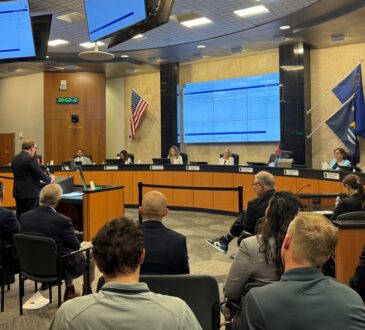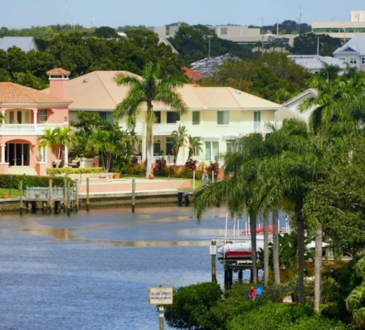
The tremors rattling US commercial real estate are spreading to other countries and sectors, and threaten to escalate into a financial earthquake as refinancing deadlines loom.
Some investors aren’t worried about falling through the cracks, though. They think the climate of fear and confusion is serving up prime properties at bargain prices.
What’s going on?
There are growing signs that commercial real estate is in serious trouble.
Barry Sternlicht, a billionaire real estate investor and Starwood Capital’s CEO, recently predicted $1 trillion of losses on office properties alone.
More than $900 billion, or 20%-plus of the total debt owed on US commercial and multi-family real estate, will mature this year, Bloomberg reported this week. Borrowers may have no choice but to refinance at much higher interest rates, or sell their properties at a big discount.
Property jitters are being felt in Europe too. The value of bonds for Germany’s Pfandbriefbank tumbled this month as investors fretted about its exposure to the embattled industry.
Moreover, the European Central Bank has threatened to impose steeper capital requirements on lenders unless they take commercial real estate risks seriously, sources told Bloomberg.
At the same time, some Chinese investors are rushing to sell foreign real estate at discounts of 45% or more, in an effort to free up cash as they weather a worsening property crisis at home.
Prospective losses, refinancing woes, international contagion, and panic selling combine to create a bleak outlook for the commercial property sector.
Why’s everyone so worried?
Fears were reignited this month after New York Community Bancorp abruptly cut its dividend, set aside some $500 million to cover bad debts, and revealed a surprise quarterly loss that it blamed on just two troubled loans.
Investors promptly sent NYCB stock down 60% in five days, and it’s still trading at two-decade lows. The lender’s scramble to clean up its finances triggered bad memories of last spring’s regional-banking fiasco that saw Silicon Valley Bank and two other lenders hit by tidal waves of deposit withdrawals, then seized by the federal government before they collapsed entirely.
The catalyst for both the banking and commercial real estate drama is deceptively dry: rising interest rates.
But the simple act of making borrowing more expensive can discourage spending, hiring, and investing; drag down the prices of risky assets like stocks by boosting yields from bonds and savings accounts; turn the screw on debt-reliant industries; and slow the economy into recession.
In response to surging inflation, the Federal Reserve hiked its benchmark interest rate from virtually zero in early 2022 to more than 5% by the following summer. It hasn’t lowered it since, and other countries’ central banks have followed its lead.
The combination of higher borrowing costs and the shift to remote working has sapped demand for offices and other commercial property, driving down asset values.
Some regional lenders such as Silicon Valley Bank weren’t sufficiently hedged against rate hikes last year, and saw their portfolios of bonds and mortgages slump in value as a result.
Stung by those paper losses, fearful of a surge in late payments and loan defaults, and wary of further bank runs, lenders have pulled back from lending for commercial property.
The upshot is the sector not only much higher interest payments on its massive debts, but also a credit crunch and declining asset values. Small businesses are also feeling the squeeze from steeper borrowing costs and stricter lending standards.
On the bright side, inflation has dropped from a 40-year high of 9.1% in the summer of 2022 to below 4% in recent months, leading the Fed to pencil in a number of rate cuts this year.
But many property loans are falling due in the next year or two, raising the question of whether rates will come down fast enough to prevent a disaster.
Indeed, some $2.2 trillion in commercial mortgages are set to mature by the end of 2027, data firm Trepp estimates.
“At some point, that avalanche is going to hit,” the firm’s chief product officer told The Wall Street Journal.
Wait, some buyers are wading into this market?
Yes they are. Warren Buffett famously preaches “be greedy when others are fearful” — and some brave souls are taking that advice to heart.
Ian Jacobs, a former assistant to the Berkshire Hathaway CEO, plans to buy 3 million square feet of office space in San Francisco and pay about 70% below building costs, The Journal reported this week.
He’s already lined up $750 million from investors, despite warning them it could take a decade for prices to bounce back, the report said.
Jacobs is a member of the Reichmann family, meaning bargain hunting is pretty much a family business. His relatives built a real estate empire by scooping up cheap properties in New York City when it nearly went bankrupt in the 1970s.
HUM/Getty Images
Other examples include Ares Management and RXR, two investment firms that are purchasing interests in 3 million square feet of office space, sources told The Journal.
In December the Aon Center in downtown Los Angeles sold for about $148 million — considerably less than the $268 million it fetched in 2014, Bloomberg reported.
Moreover, “Undercover Billionaire” star and real estate tycoon Grant Cardone has hailed the ongoing correction as a rare chance for everyday people to buy “trophy real estate” from institutional owners.
Of course, commercial property players have a vested interest in trumpeting the industry’s troubles as a buying opportunity, given that could revive investor interest and reverse the plunge in their property values.
Yet it’s likely that some high-quality assets will be caught up in the selloff. Those who buy them when fear is spreading far and wide and indebted developers are in a race against time will ultimately be rewarded for their courage.




